In today’s online shopping world, sending the right message to the right person can make a big difference.
Imagine if every email you sent to your customers felt like it was just for them. That’s what smart segmentation does—it helps you talk to different groups of customers in ways they like best.
This isn’t just a guess; numbers show that when ecommerce brands use smart ways to group their customers and send targeted emails, they can make a lot more money—up to 760% more!
So, instead of sending the same email to everyone, smart segmentation helps you send special offers, product news, and more to the people who really want to see them.
It’s like knowing exactly what gift to buy for a friend’s birthday—it shows you care, and that makes a big difference.
In this article, we will discuss:
- Segmentation vs Targeting vs Personalization
- Challenges With Segmentations
- “SMART Segmentation” Blueprint
Segmentation vs Targeting vs Personalization
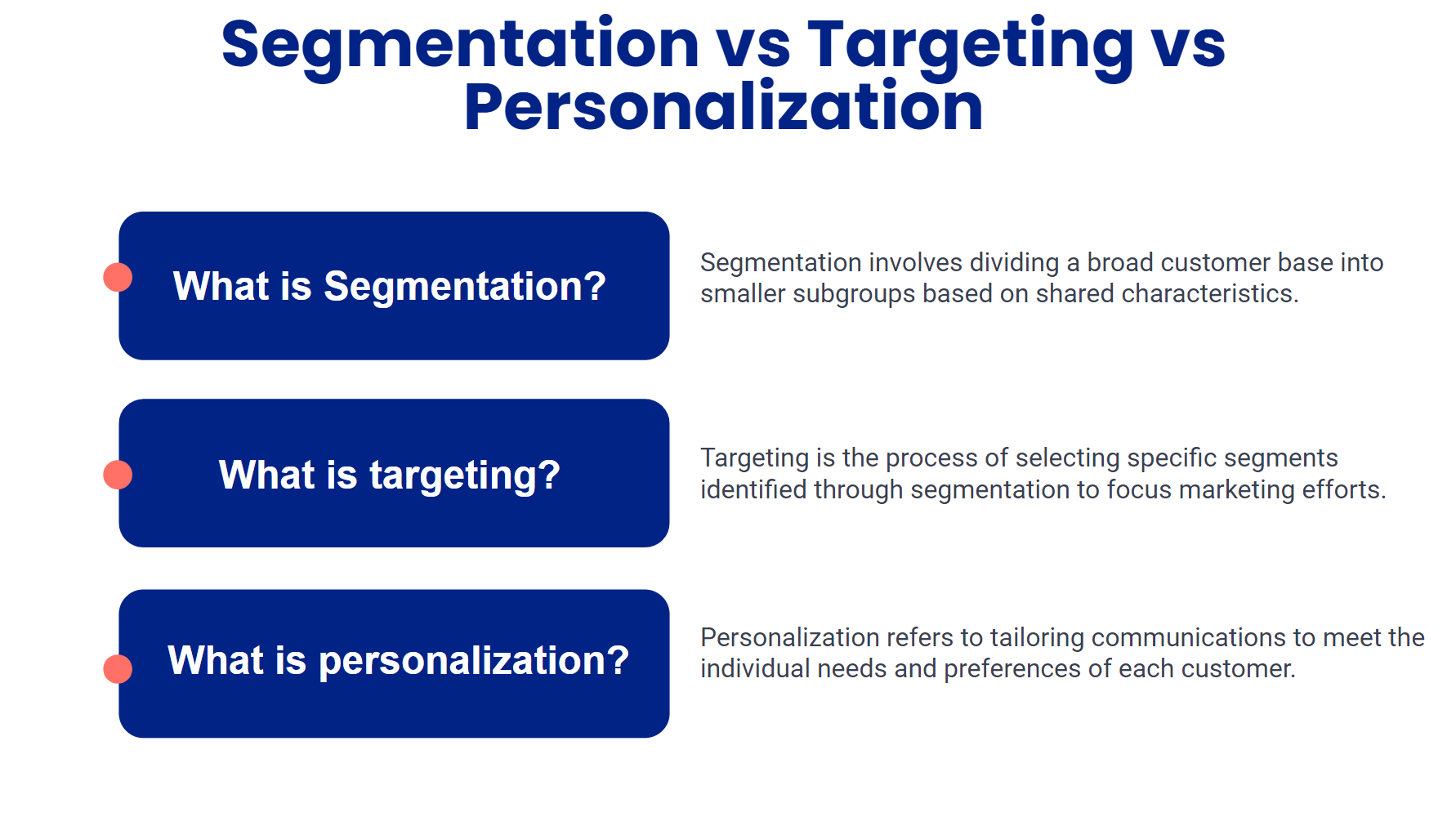
What is Segmentation?
Segmentation is the process of dividing a larger market into smaller groups of consumers with similar needs, behaviors, or characteristics. It’s about recognizing that each customer is an individual with unique preferences and tailoring your marketing efforts to meet those specific needs.
Effective segmentation allows ecommerce brands to focus their resources where they are most likely to yield results, enhancing customer satisfaction and increasing efficiency.
What is Targeting?
Targeting is the next step after segmentation. It involves choosing which segments to focus your marketing efforts on.
This decision is based on the potential value each segment brings to your business and how well your products or services meet the needs of consumers in that segment.
Targeting is about being selective and investing in relationships with segments that offer the highest return on investment.
What is Personalization?
Personalization is the customization of messages and offers to the individual within the chosen segments. It goes beyond using a customer’s name in an email.
Personalization is about tailoring the content, offers, and timing of your marketing messages based on the preferences and behaviors of each recipient.
This approach significantly enhances the relevance and effectiveness of your marketing efforts, leading to higher engagement and conversion rates.
Challenges With Segmentations
When it comes to grouping customers into different segments, e-commerce brands often find themselves facing a few hurdles. Here’s a closer look at some common challenges:
1. Too Many Choices– Imagine walking into a room full of buttons, where each button does something different. That’s what trying to pick the right segmentation can feel like.
There are many ways to divide customers – by age, what they buy, where they live, or even what they’re interested in. Sometimes, having so many options makes it hard to decide which one to press.
2. Picking a Type– It’s like being at a crossroads and not knowing which path to take. Should you group customers based on their age or where they live? Or maybe by what they like or how they behave?
Each type of segmentation offers its own insights, but choosing the best one for your business can be tricky.
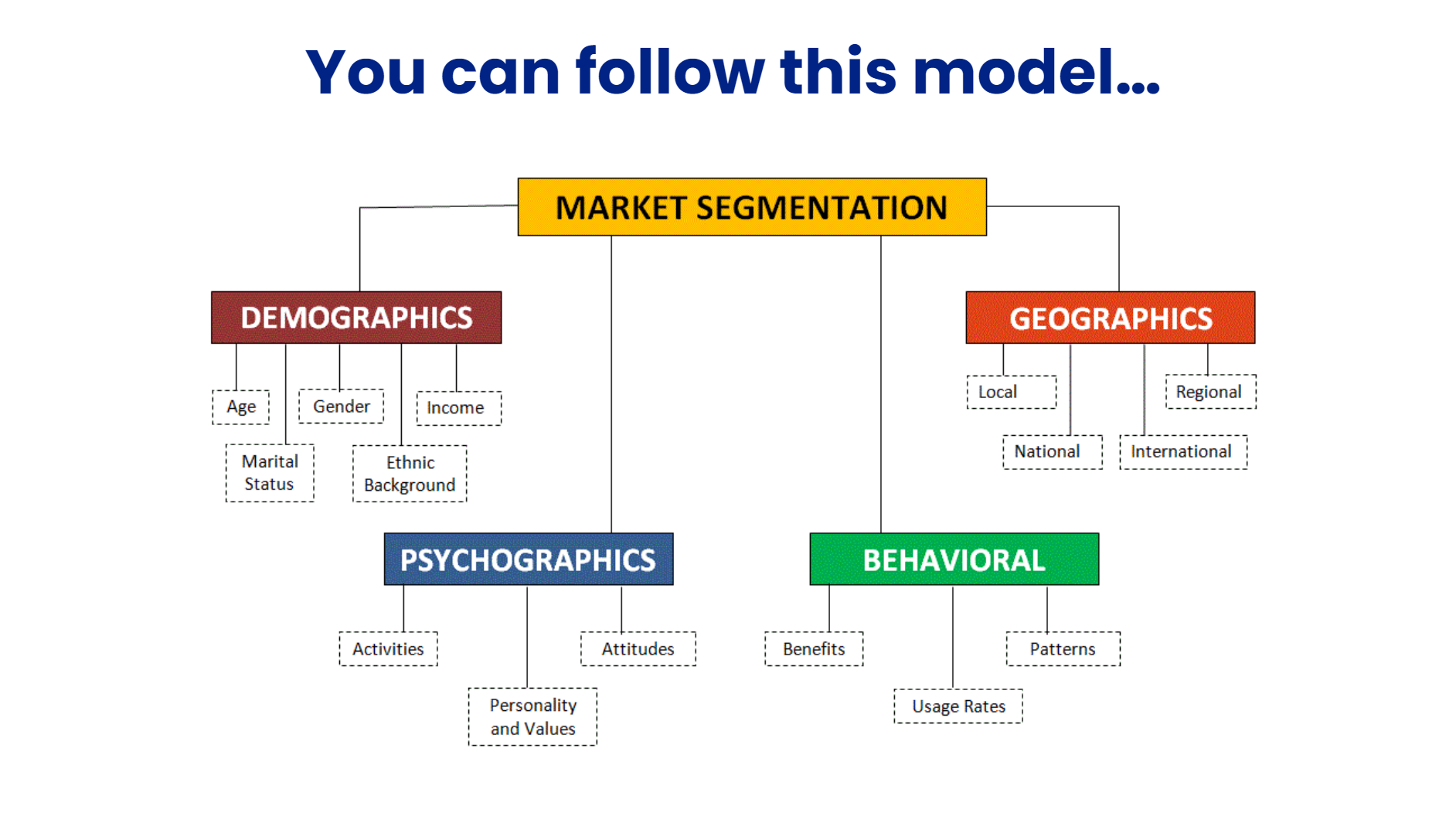
4. Focusing on the Right Group– Once you’ve got your segments, deciding who to talk to is the next big question. Do you spend your time trying to make happy customers even happier, win back those who haven’t shopped in a while, or stop spending effort on those who don’t seem interested anymore?
It’s like trying to decide which plant needs the most water in a big garden.
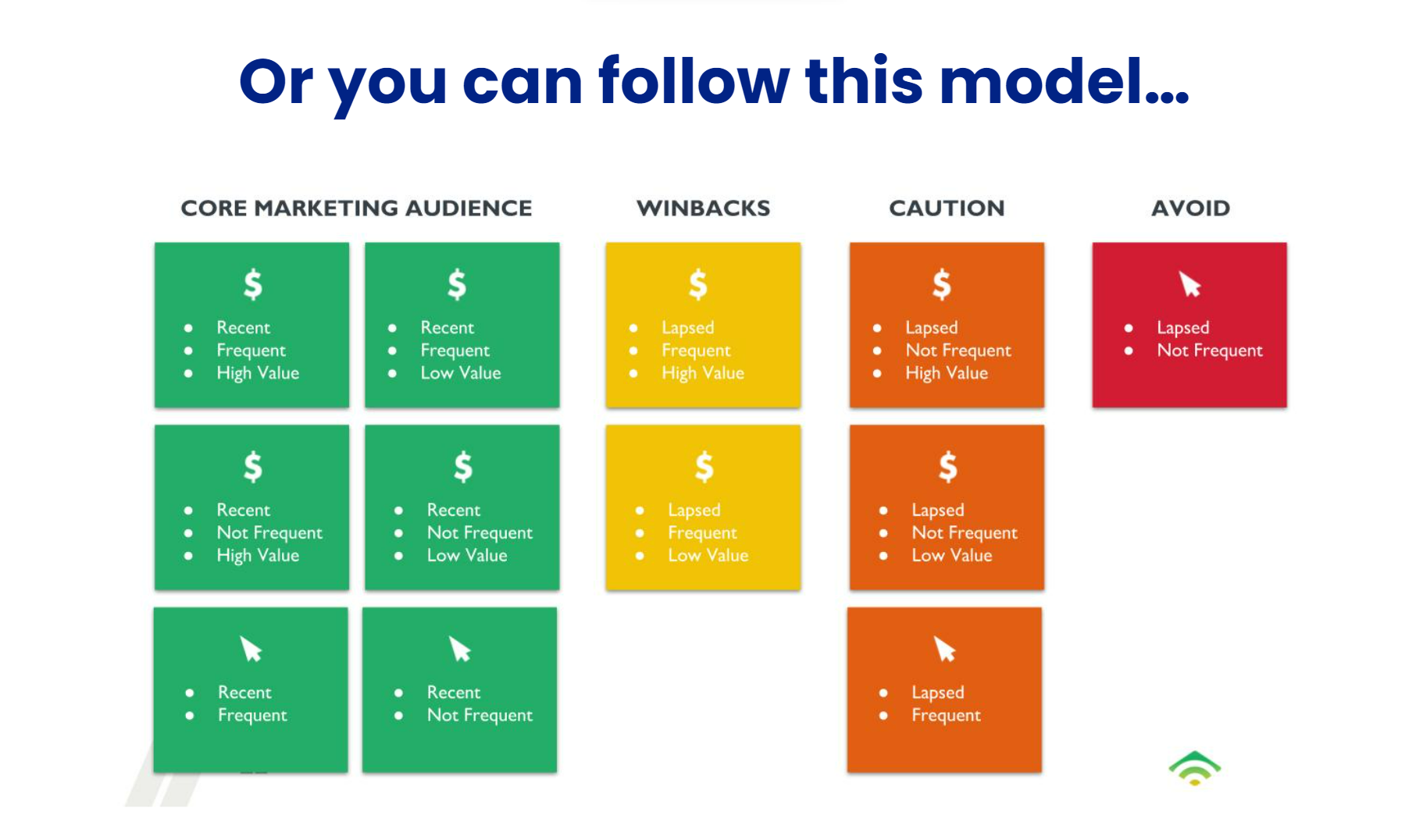
5. Using Data Wisely: Some businesses use a special model called RFM (Recency, Frequency, Monetary) to figure out who their best customers are based on their shopping habits.
But diving into this data and making sense of it all can feel like being a detective without a clue. It’s important but can be pretty overwhelming.
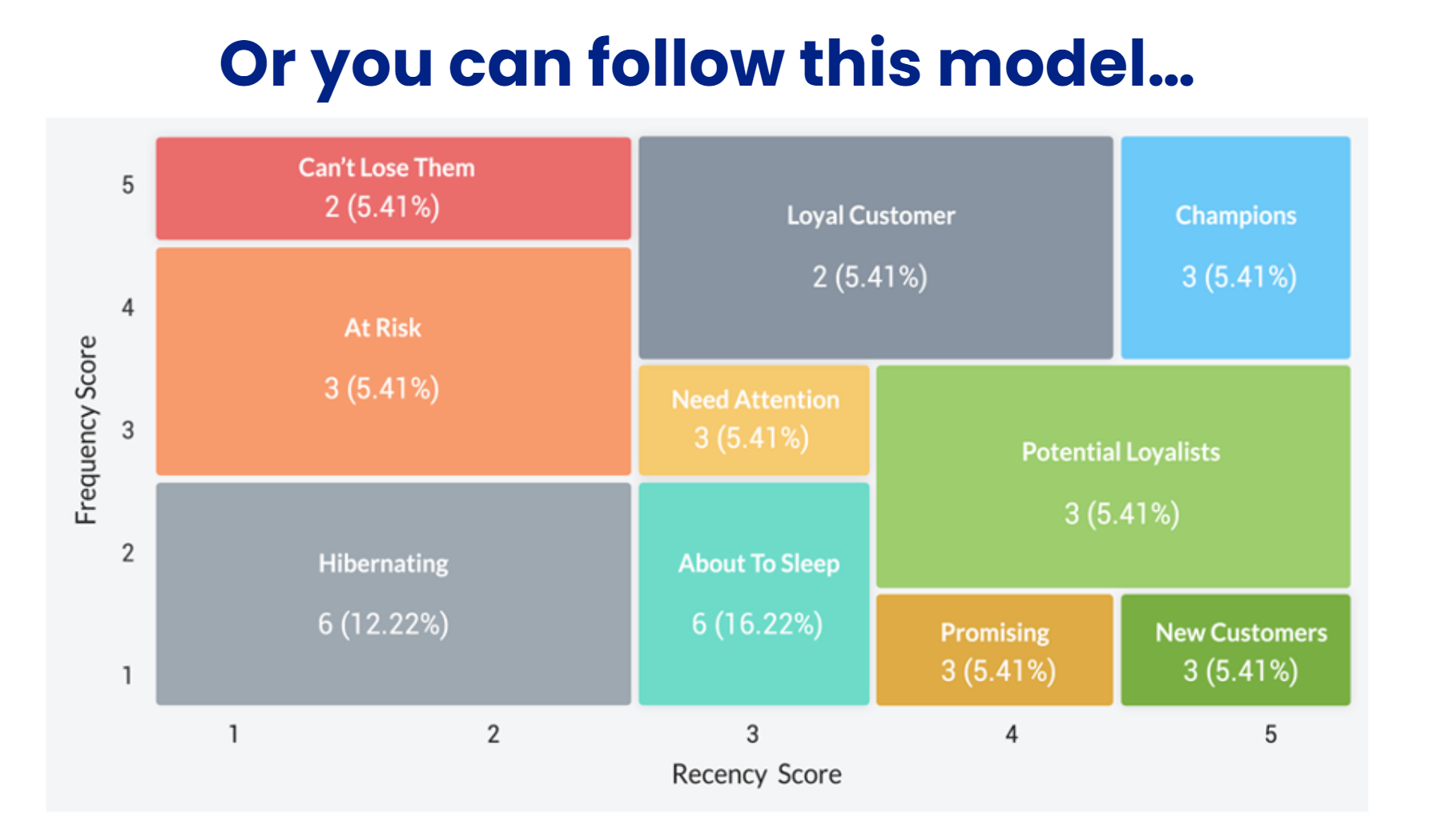
6. Not Spreading Too Thin– Trying to keep up with too many groups can leave you spinning. It’s like juggling too many balls at once—eventually, you might drop one. Focusing on just a few segments at a time can be more effective than trying to manage a lot.
Although it might seem like a good idea to have lots of segments for precision, sometimes less is more. You don’t need hundreds of groups to see results.
Just a few key segments can make a big difference, making things less confusing and more manageable.
Understanding these challenges is the first step towards tackling them.
By simplifying your approach to segmentation, you can more effectively target your efforts and achieve better results, making sure your marketing messages hit the mark.
Introducing “SMART Segmentation” Blueprint
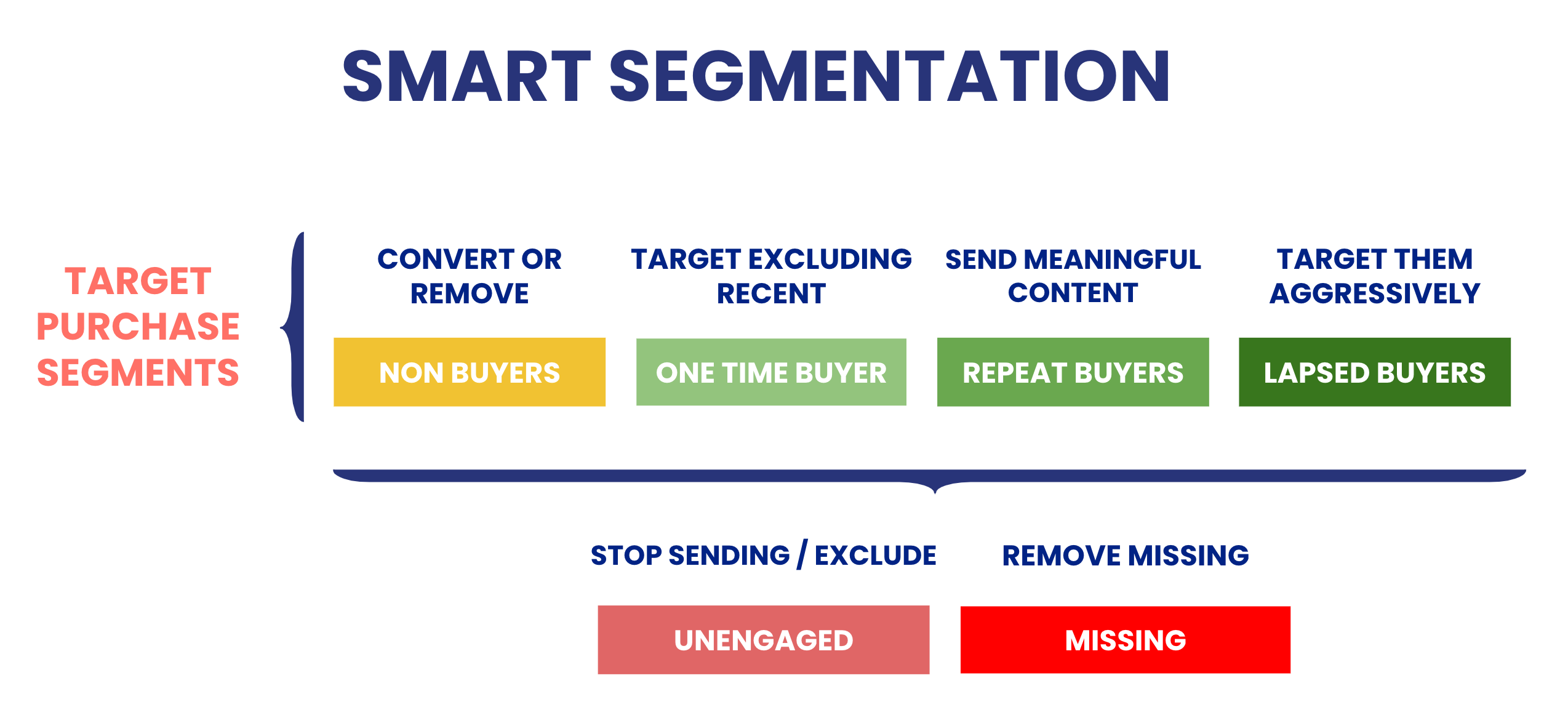
The SMART Segmentation Blueprint offers a simplified yet effective approach to optimizing your target audience engagement.
By focusing on six key segments, e-commerce brands can enhance their marketing strategies, ensuring they reach the right people with the right message.
Let’s break down each segment:
1) Non-Buyers
Non-buyers are individuals who have shown interest in your products or services but haven’t made a purchase yet.
Engaging this group requires understanding what’s holding them back.
Is it price, product uncertainty, or something else?
Tailored communications that address these concerns, offer valuable information or provide an irresistible incentive can help convert these potential customers into actual buyers.
Discover my complete framework of the “Non-Buyers” and how to approach and convert them into loyal customers.
2) One-Time Buyers
Buyers who have made a single purchase from your brand. The goal here is to encourage them to return for more.
This can be accomplished by promoting the value of your products through informative campaigns. Also, make personalized recommendations based on their previous purchases.
And making special offers to make the second purchase even more appealing.
Take a look at my complete framework on the “One-Time Buyers”, this will guide you on how to increase the engagement level of these one-time buyers to turn them into loyal customers for life.
3) Repeat Buyers
These are your loyal customers who have made multiple purchases. Sometimes it can be a bit challenging to keep this group engaged and feeling valued. But don’t forget it is equally important to keep them in a loop.
How?
By giving exclusive deals, loyalty rewards, and early access to new products or sales can make them feel special & valued.
Encouraging them to share their positive experiences with others can also turn them into brand advocates.
Explore my complete framework on “Repeat Buyers” containing strategies on how to boost the engagement of repeat buyers and turn them into brand advocates.
4) Lapsed Buyers
Lapsed buyers are previous customers who haven’t purchased in a while. Re-engaging them involves understanding why they left and addressing those reasons directly.
Sending them a reminder email of what they’re missing or an update on what’s new since they last purchased can be a good strategy to start a conversation again.
A win-back offer or sending a reminder on loyalty points can also reignite the interest of your lapsed audience.
To discover more, click here to unlock my complete framework on “Lapsed Buyers”. And the strategies on how to win them back.
5) Unengaged audience
This segment includes individuals who have stopped engaging with your emails i.e. the ones who have opened zero emails in the last 180 Days.
Continuing to send communications to them can hurt your engagement rates and overall email deliverability.
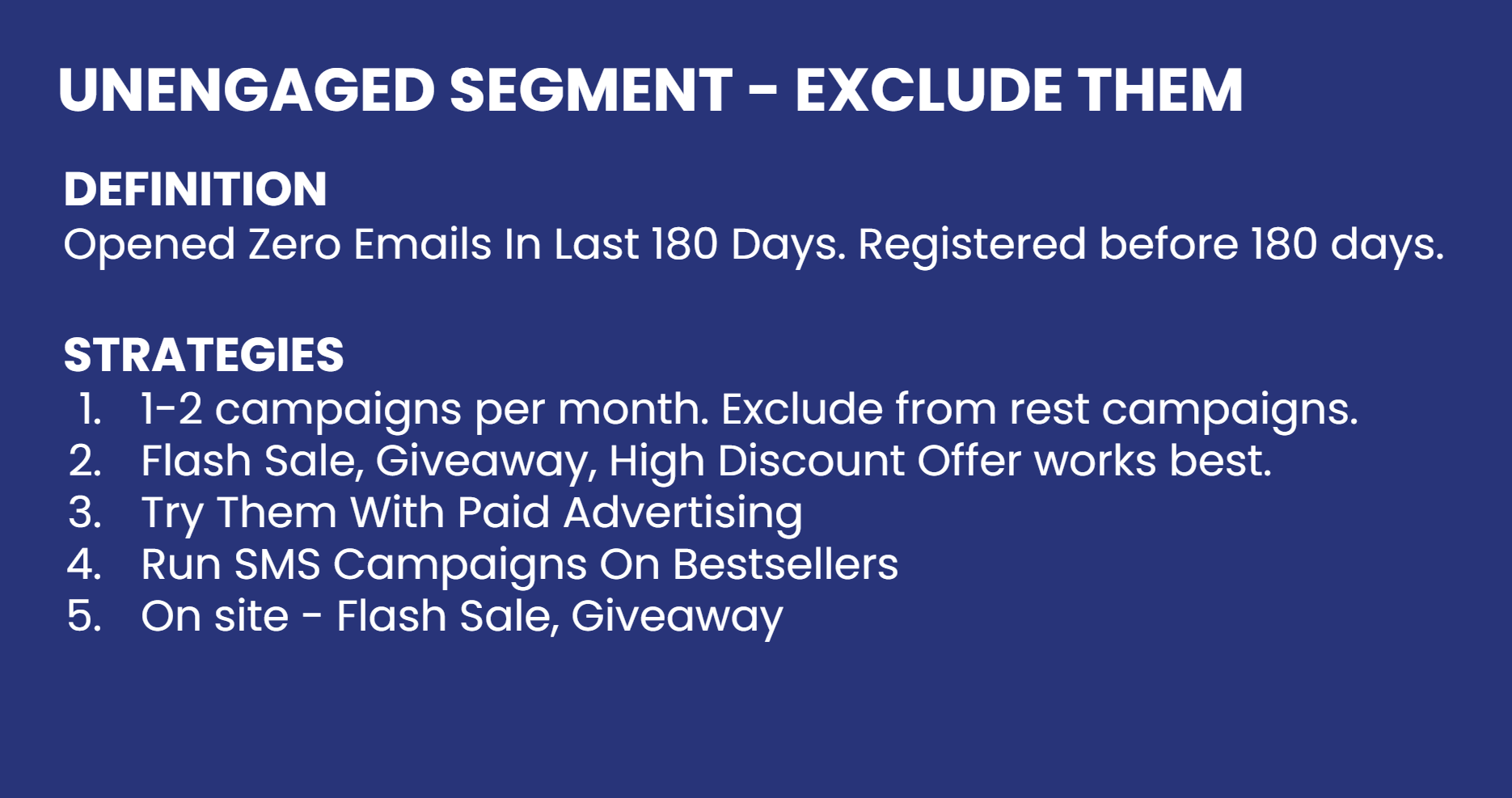
It may be time to remove these contacts from your active list or try a different re-engagement strategy before making the final decision to cut them off.
6) Missing audience
Similar to the unengaged audience, this group has also not interacted with your emails for more than 365 days and has never made a purchase.
They represent a drain on resources without contributing to your goals. Removing or suppressing these contacts can clean up your list and improve the health of your email marketing efforts.
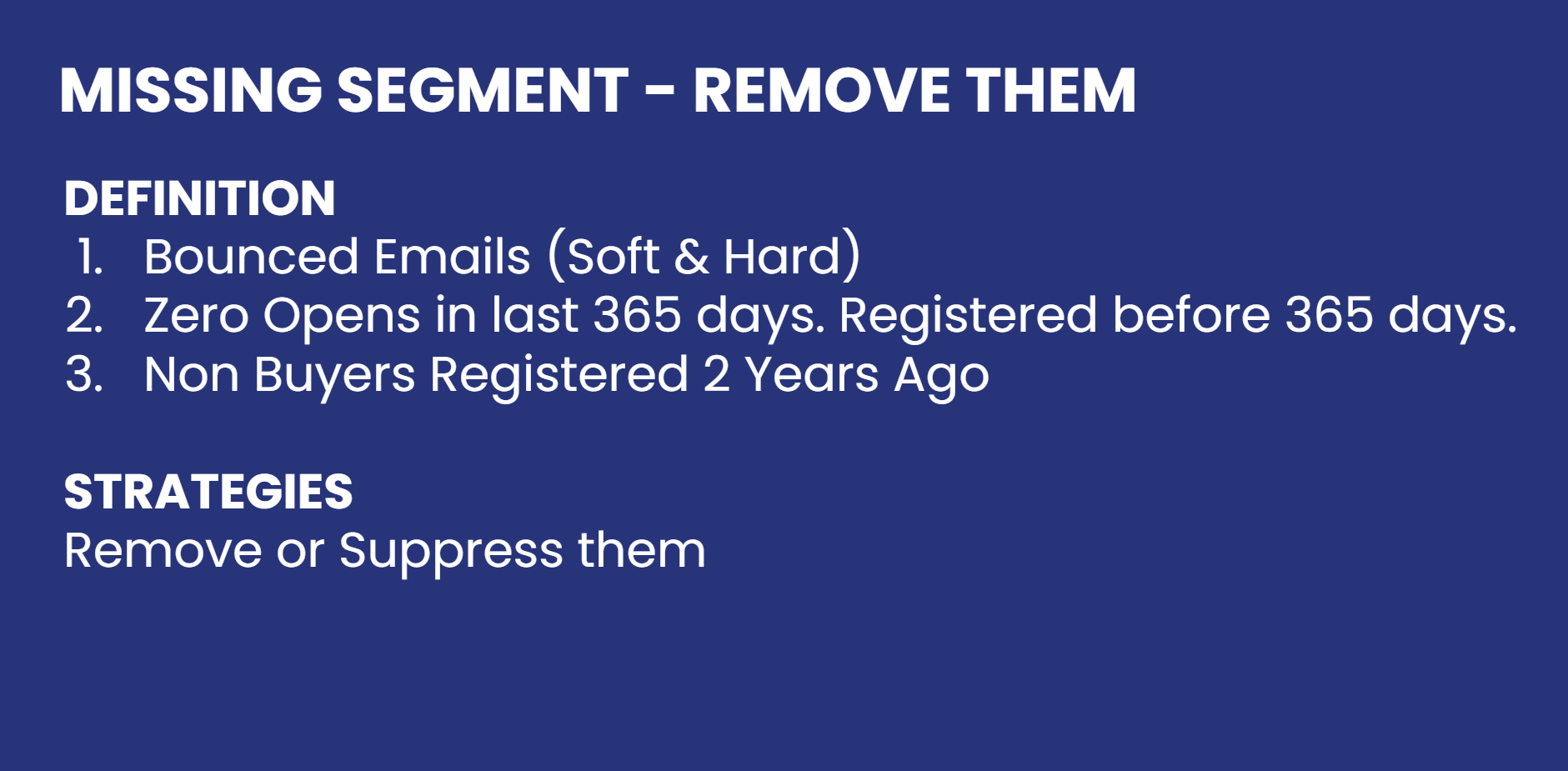
The SMART Segmentation Blueprint is designed to make audience targeting more manageable and effective.
By focusing on these six segments, brands can allocate their resources more efficiently, create more personalized experiences, and ultimately convert more leads into loyal customers and brand advocates.
Conclusion
These SMART Segmentations offer a streamlined, focused approach to engaging your audience in the most effective way possible.
Concentrating on six key segments, from the potential of non-buyers to the loyalty of repeat customers.
Addressing the need to cleanse your list of unengaged contacts, you can tailor your marketing strategies to meet the specific needs and behaviors of each group.
This targeted method not only ensures that your messaging is relevant and impactful but also maximizes your marketing efforts’ efficiency and results.
Embracing this blueprint can transform your approach to segmentation, turning it into a powerful tool for driving engagement, and conversions, and ultimately, fostering a base of loyal brand advocates.
